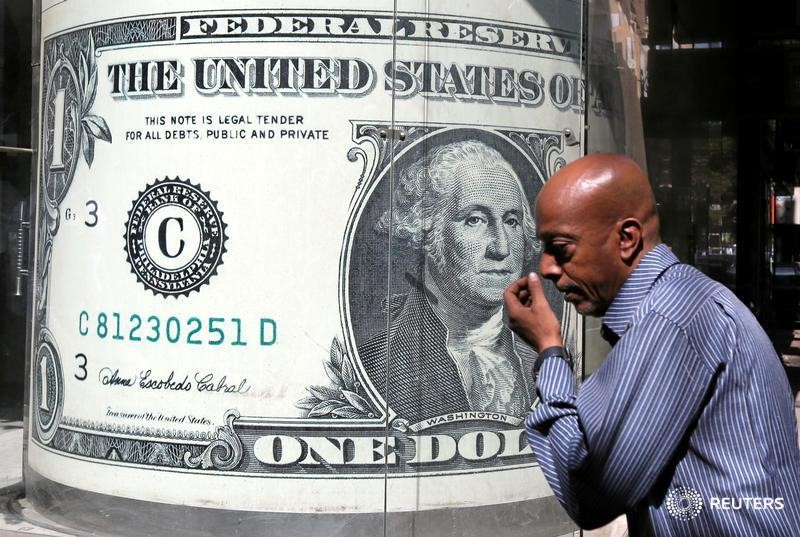Dollar snaps two-week losing streak, but some divided on next move
2023.07.21 16:24

© Reuters.
Investing.com — The dollar snapped a two-week losing streak Friday ahead of the Federal Reserve’s widely expected rate hike next week, but some are divided on whether the rebound has staying power.
The , which measures the greenback against a trade-weighted basket of six major currencies, rose by 0.19% to 100.79, following a plunge to a more than one-year low last week.
Bearish case: Dollar rebound has limited room as Fed nearing end of hiking cycle
The Fed is expected to lift interest rates next week, and likely push back against bets that it won’t follow through with another hike, but this would be only “temporary support for the USD,” MUFG said in a note.
“Slowing US inflation alongside resilient US activity data is proving to be a negative mix for the dollar,” it added.
The Federal Reserve will kick off its two-day meeting on Tuesday, with many expecting the meeting to culminate in a 0.25% rate hike following a pause at the June meeting.
About 99% of traders expect the Fed to hike rates next week, Investing.com’s Fed Rate Monitor Tool showed.
Bullish case: Soft landing bets not enough to keep dollar down in H2; Fed unlikely to cut in early 2024
The dollar weakness in recent weeks has been driven by bets of a soft landing in the U.S., but this isn’t “sufficient condition for the greenback to weaken further,” Oxford Economics says, and it’ll likely recover lost ground in the second half of the year.
Economic growth is likely to slow in China and Europe, as “more stable, even if moderating, growth in the US will be a net positive for the dollar over the rest of H2,” it added.
The end of the Fed rate hike cycle, meanwhile, isn’t the dark stormy cloud for the greenback that many expect as it is unlikely to be accompanied by rapid rate cuts, which are priced in for early 2024.
“Even as markets have come round to our view that the Fed will not shift policy in 2023, we continue to push back on an early 2024 pivot, which is now priced in,” Oxford Economics said.







